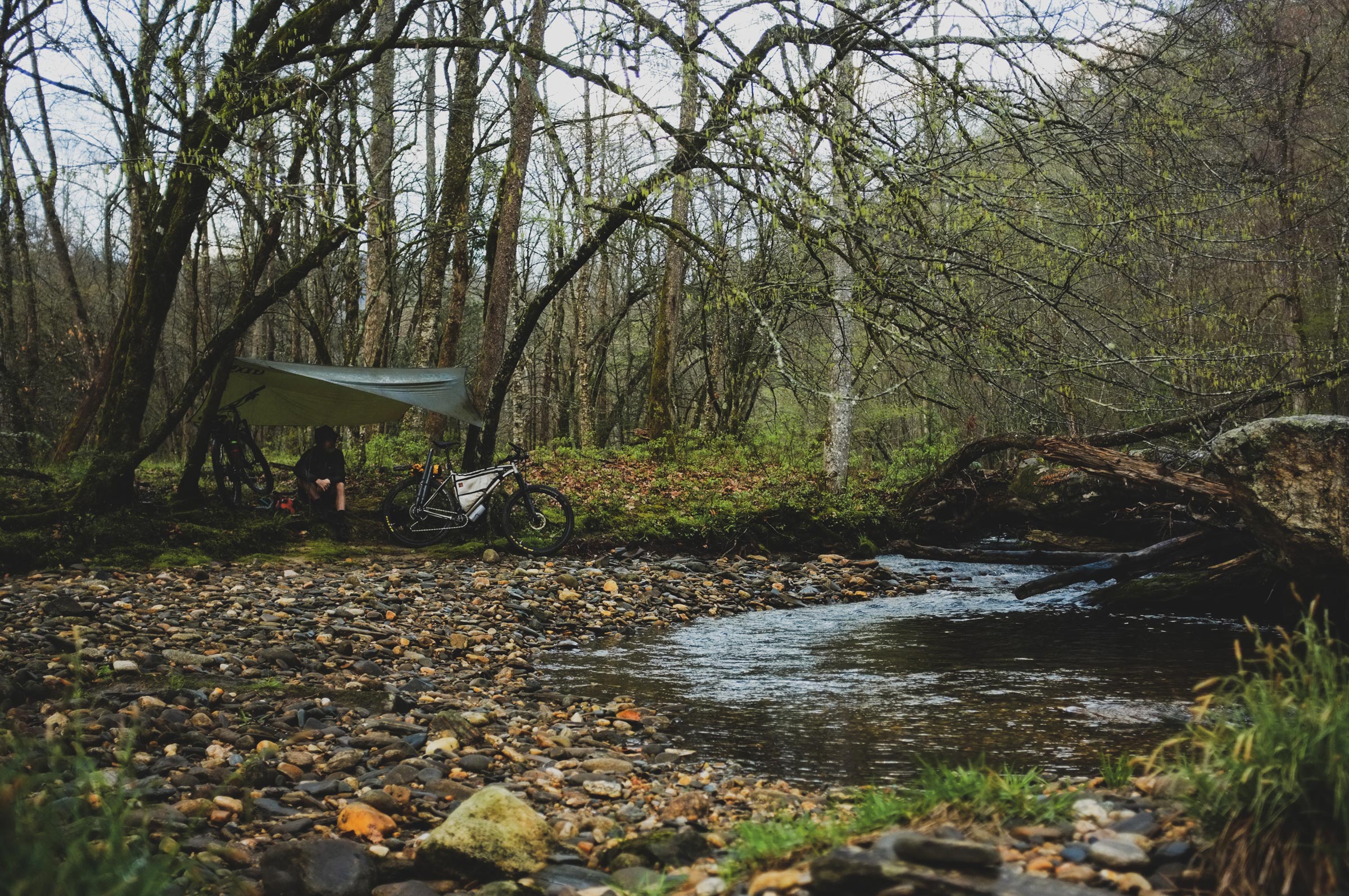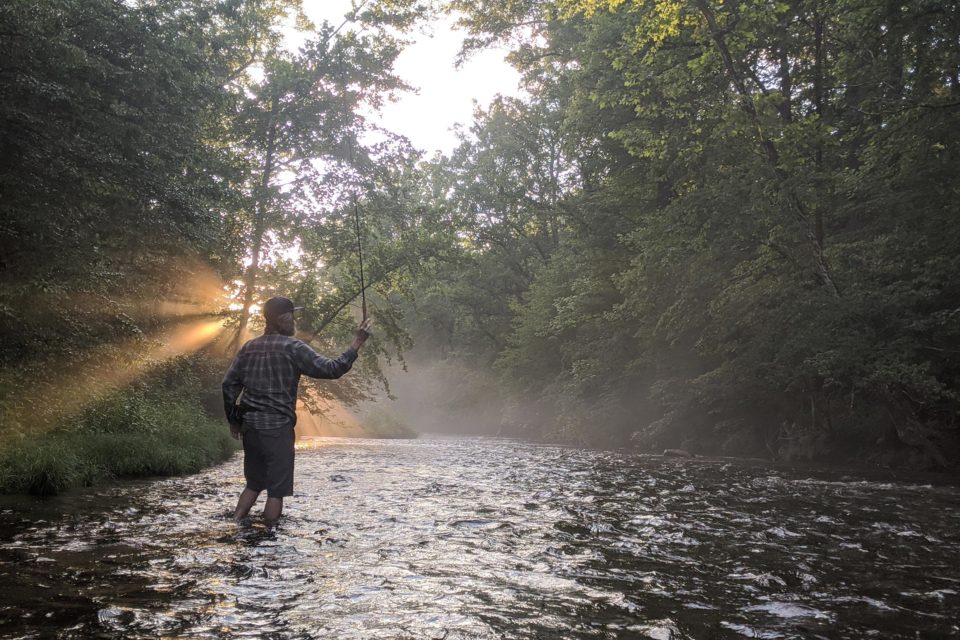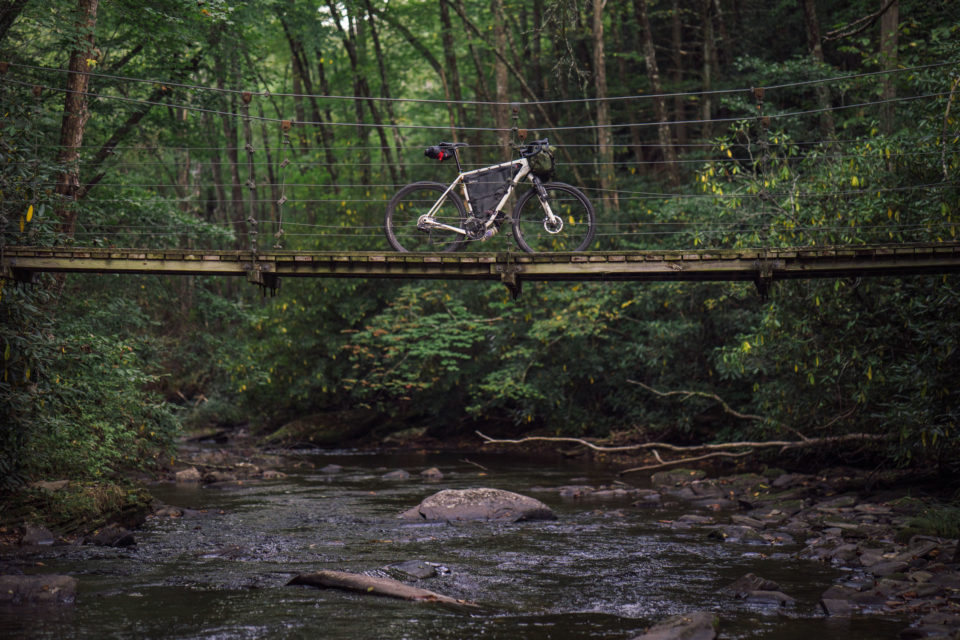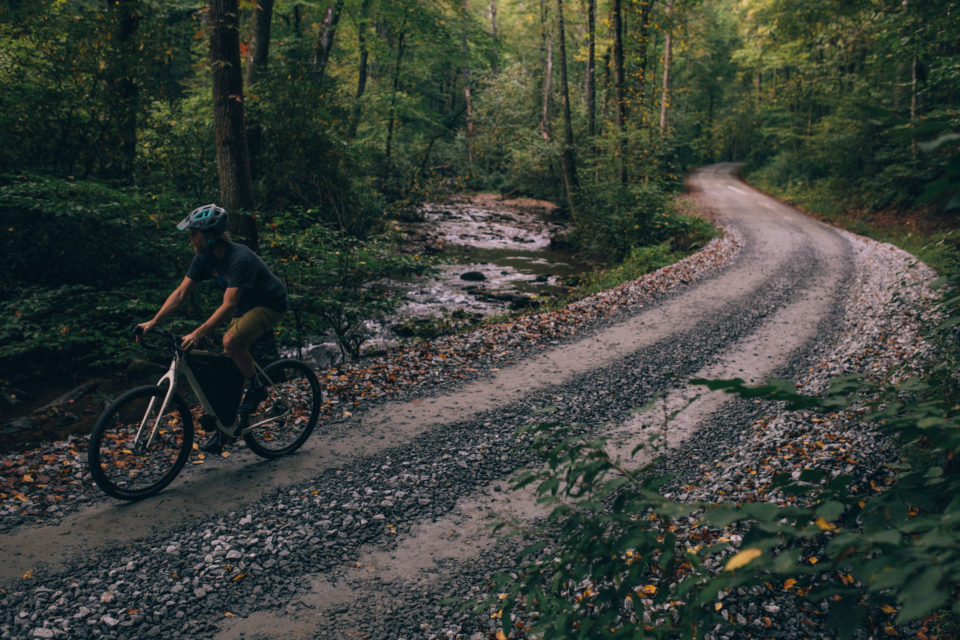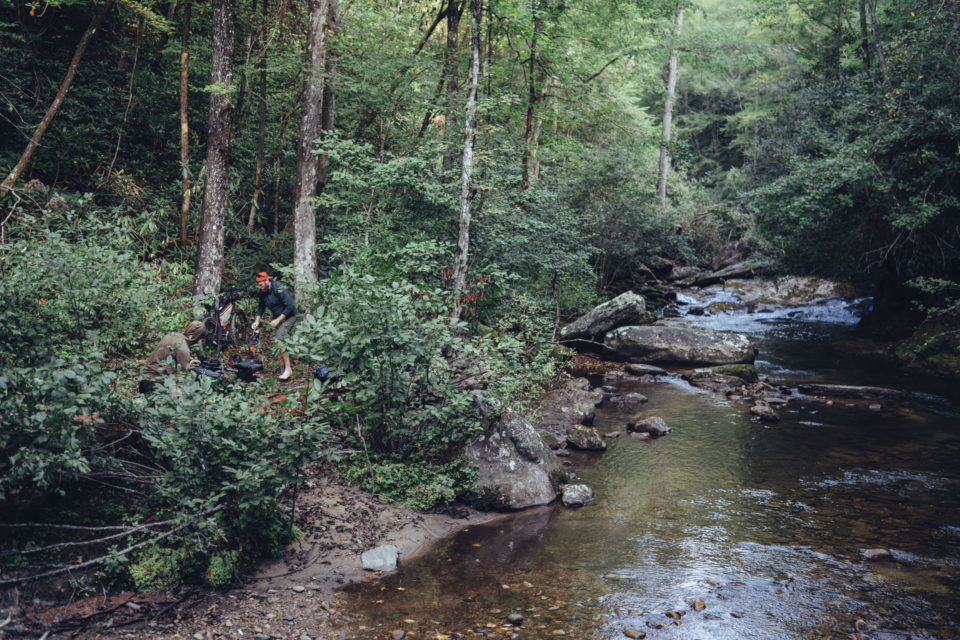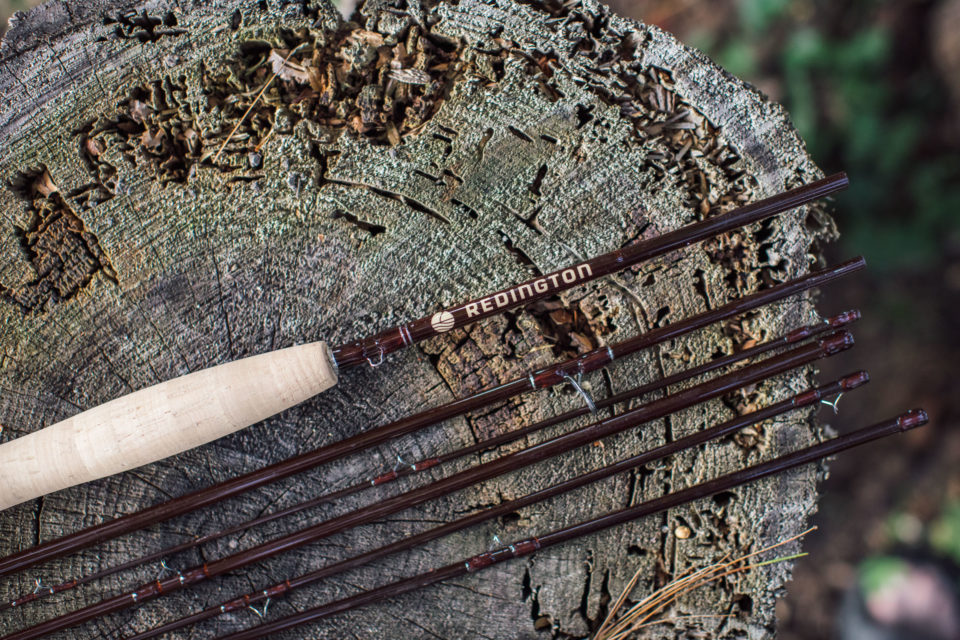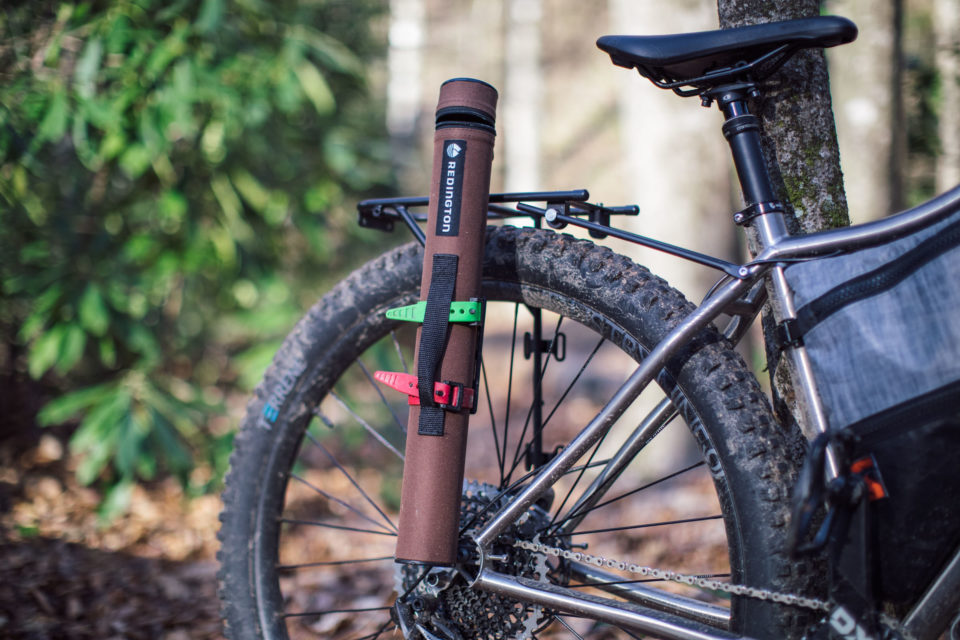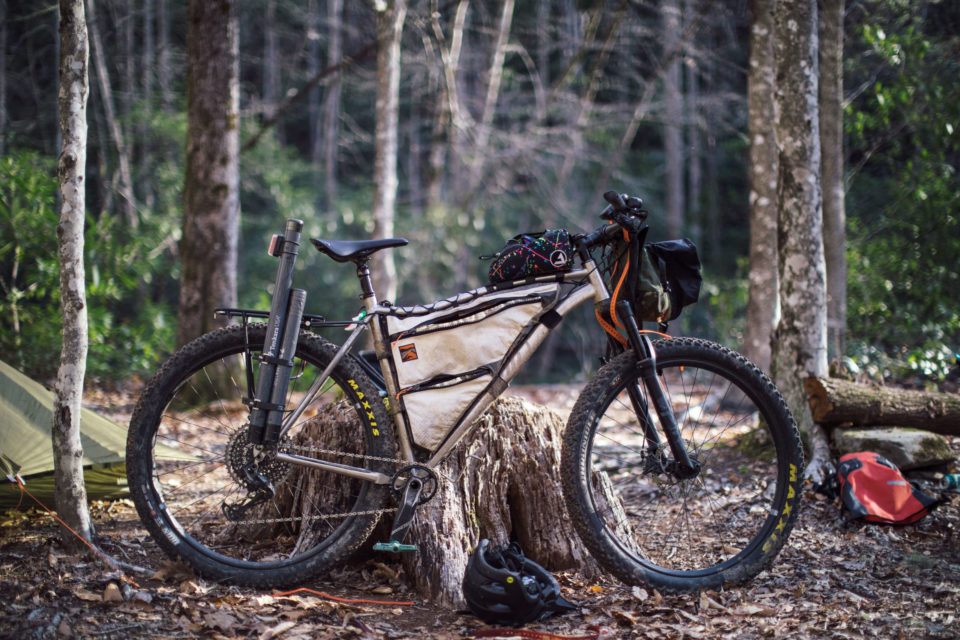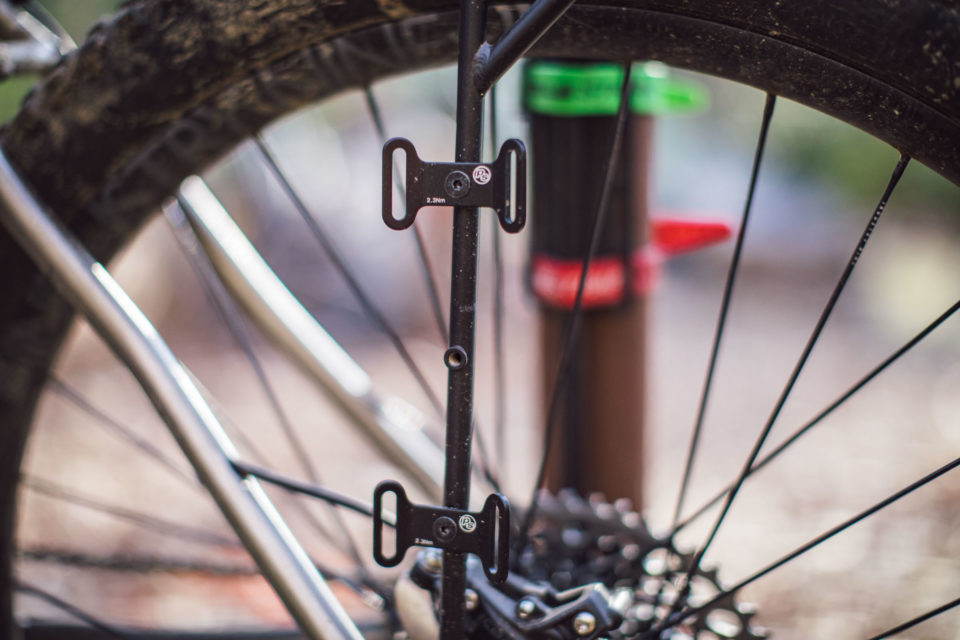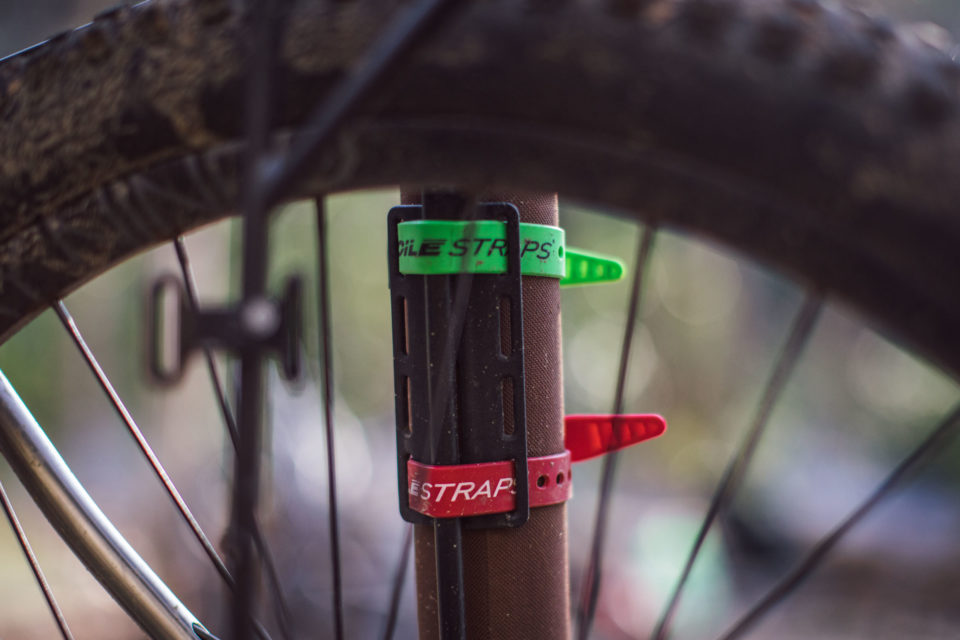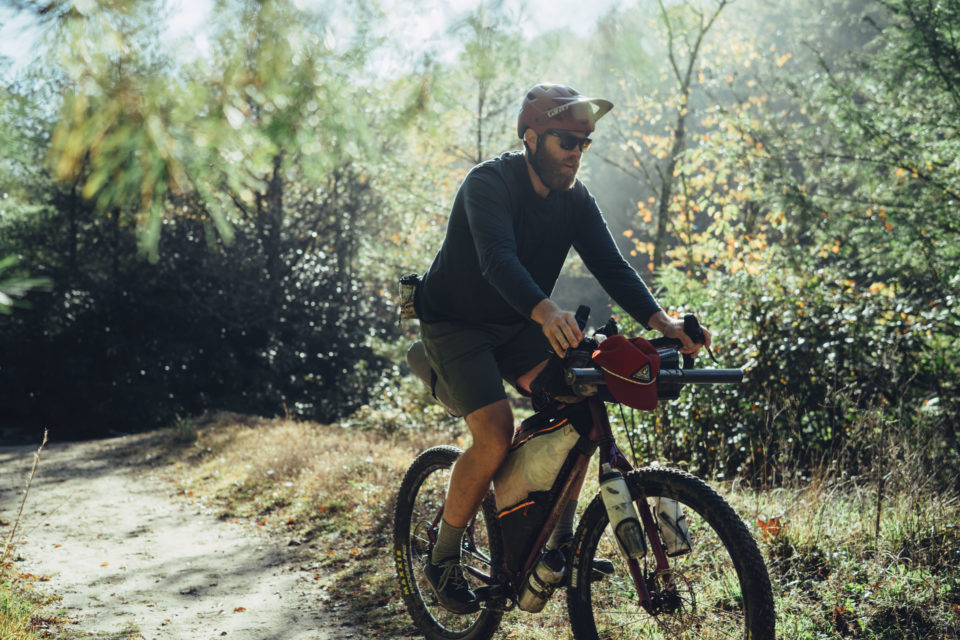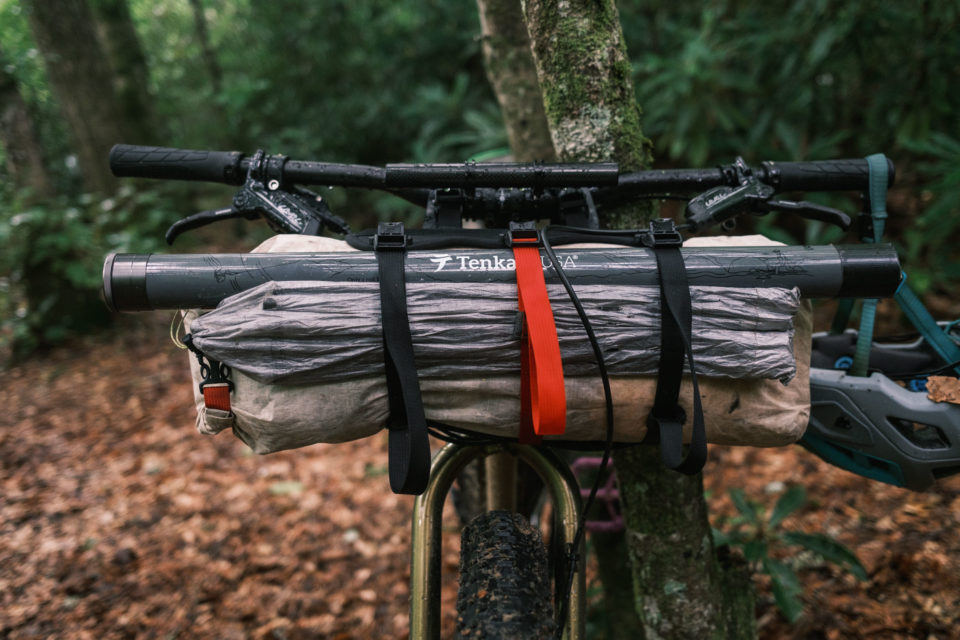Bikefishing: A Reintroduction
Share This
After a 20-year hiatus, Logan was lured back into fly fishing by bike. Over the last two summers he’s mixed it into day rides and bikepacking overnighters in the southern Appalachians. Find his full bikefishing kit and thoughts on the subject here…
Photos of me fishing are by TJ Kearns
Back in the mid-90s I was completely obsessed with fly fishing. In the summer of ‘94 I fished every day after work for two months straight, rain or shine. Shortly thereafter I lost interest for various reasons and hadn’t picked up a fly rod since… until last summer. I can’t claim to be as hooked as I once was, but I will say that it was the bicycle that reeled me back in, and what gets me on the water about once a week these days.
The bike brings new meaning to fly fishing. It allows you to access places that are difficult to get to for other anglers and tourists. This means less competition for space and more alone time with the river. To me, that’s what it’s all about—quiet meditation in the water, mindfully placing a fly among the riffles in the current. Being immersed in the sound of the stream. Watching insects and birds interact with the unique ecosystem on the river banks. A long bike ride with a little fly fishing break in the middle makes for an ultra-restorative session in the wild.
Integrating fishing into rides also opens up a new set of adventurous possibilities. For one, it can inspire new bikepacking routes that have a different itinerary. Campsite destinations change from scenic mountain overlooks to hidden nooks along remote stretches of water. Saddle time is reduced to prioritize early arrival at camp and more time in the water. Day trips take on a new agenda, even. A mid-ride fishing stop can turn a typical afternoon ride into an all-day microadventure.
Bikefishing Kit Essentials
As I’ve gotten reacquainted with fly fishing over the last two years, I’ve tried carrying a few different kits on various bikes. I’ve now honed it down to a pretty simple setup, which I’ll outline here. To start, there are four essentials that I’ve put a lot of thought into.
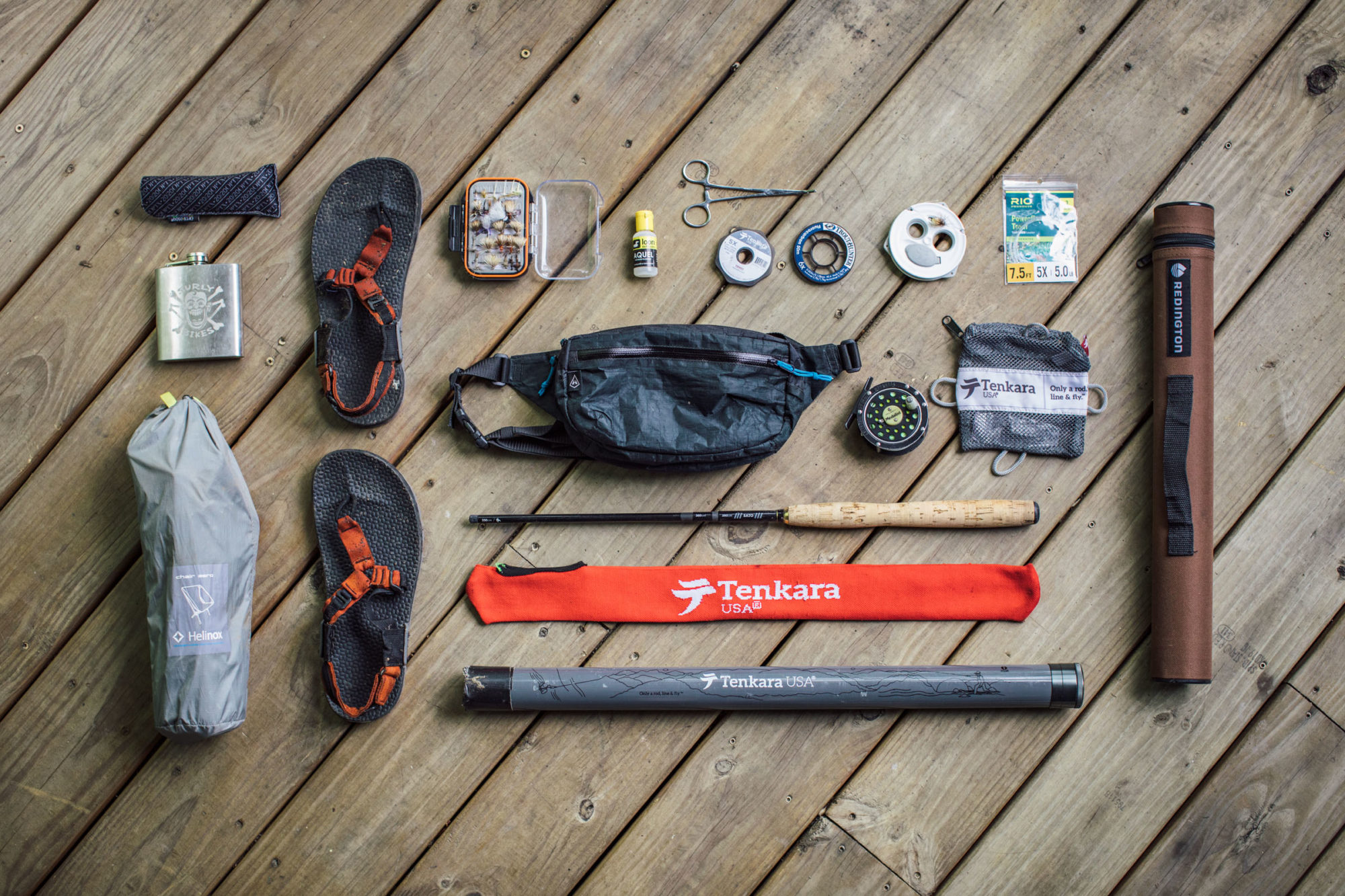
Lightweight/packable Fly Rod
Most of our rivers and streams are fairly small here in the southern Appalachians. Further, I enjoy fishing in catch and release zones for relatively small rainbow, brown, and native brook trout that are usually between 6-14” in length. This often means fishing in the smaller headwaters of larger rivers or creeks. These waters can be tight, choked with rhododendron, and require a relatively short fly rod (between 7.5 and 9 feet long). I alternate between two rods:
Redington Classic Trout (6pc / 3WT / 8’0)
As its name suggests, the Redington Classic Trout series of rods are a mainstay rod in the fly fishing world. They’re also well regarded and pretty affordable compared to many higher-end brands. The 380-6 model is one of several options in the Classic Trout lineup and is a very lightweight, fast action (3-weight) rod that breaks into six pieces at a length of 18″ (46cm). It weighs just 77 grams, although the case is rather heavy (330 grams). The 380-6 is an 8-footer that’s perfect for tight streams on the East Coast, and the light action casts beautifully and has a great feel when fishing for smaller trout. I’m quite happy with this rod and use it with my old Medalist reel that’s been in a storage box for a long time! You can pick up the Classic Trout on Amazon for about $140.
Tenkara Sato
Even though I love the Redington, my go-to rod is the Tenkara Sato. For those unaware, Tenkara is the simple Japanese method of fly fishing that uses only the rod, a nylon line, 4-5 feet of tippet, and a fly of your choice. The beauty of Tenkara is that it doesn’t require a lot of gear, and you don’t have to string up the reel and rod everytime you use it, so it’s perfect for fast, on-the-fly bikefishing. The Tenkara line, tippet, and fly wind up in a simple plastic line keeper, making it easy to stow away and quick to assemble or break down. Tenkara rods are ultra portable too, telescoping down to as little as 15 inches but extending to well over 10 feet long.
The Sato is one of Tenkara USA’s more popular rods and it works beautifully. It weighs about 90 grams and telescopes down to a length of 23″ (58cm) The magic of it is that it’s a triple-zoom rod, meaning it allows you to use the rod at three different lengths: 10’8”/ 11’10”/12’9” (330/360/390cm). This is perfect for navigating different streams with varying tree cover. They also make the Rhodo, which operates at 8’9″/9’9″/10’6″. It might be a little more useful in smaller streams, but I quite like the Sato for its quick action and versatility. You can also get the Tenkara Kit, which includes the Nylon Tapered Line, the Keeper, tippet, and forceps, which is pretty much all you need aside from flies.
Generally speaking, I catch more fish when I use a Tenkara versus a classic rod and reel. The ability to place a fly without dropping the fly line works extraordinarily well and is a joy to use. However, due to the limited range, you have to be a little more stealthy when fishing in native waters where the trout are more easily spooked.
The Tenkara Sato is available on Amazon for about $250. You can also find the similar, but shorter, Rhodo for the same price.
Grippy Sandals
We can fish from April-October in sandals around here, although thick wool socks are sometimes necessary to keep toes mobile during the shoulder months. When I first started all I had was a pair of heavy and bulky Chacos—not ideal for bikepacking, and actually not ideal for fishing either. Reason being that the soles aren’t that grippy. The mossy, rocky stream bottoms common in the southern Appalachians can get pretty slippery, especially in the spring and fall. I later learned that the new Bedrock Cairn 3Ds were improved in version two with a grippier rubber sole, so I got a pair just for fishing. At first, they were pretty hard on my feet, but as a friend suggested, after about a half dozen uses they get really comfortable. And, the rubber is impressively sticky. They’re also quite easy to pack.
Another option for grippy sandals is glueing (using Shoe Glue) a piece of old carpet to the bottom of an old pair of sandals. Or, you can also buy adhesive felt for the same purpose. That said, as a commenter mentioned below, it should be noted that several states have banned felt or fiber soled fishing boots due to research showing that they can transfer invasive species from one watershed to another. More information here.
Easy Access Hip Pack
Unless you’re carrying a fishing vest, a hip pack is essential for fly fishing. It allows you to keep all the necessities close at hand, such as forceps, tippet, flies, floatant, and for some of us, reading glasses. About any hip pack will do, but I prefer a zippered pack over a roll-top as it allows quicker access. I really like Hyperlite Mountain Gear’s Versa Ultralight Hip Pack, shown here. It’s minimal, very lightweight, and comfortable. It also has two pockets: one larger pocket and one flat outer pocket accessible via a separate zipper, perfect for quick-access items like forceps and tippet.
Rain Gear
We live in a rainforest here in the southern Appalachians, so rain gear is a must. The chill of the cold water can set in fast, so having the extra layer and keeping dry is key. We also sometimes bring along a tarp when we know there’s going to be an afternoon shower. It offers a nice respite during a heavy downpour.
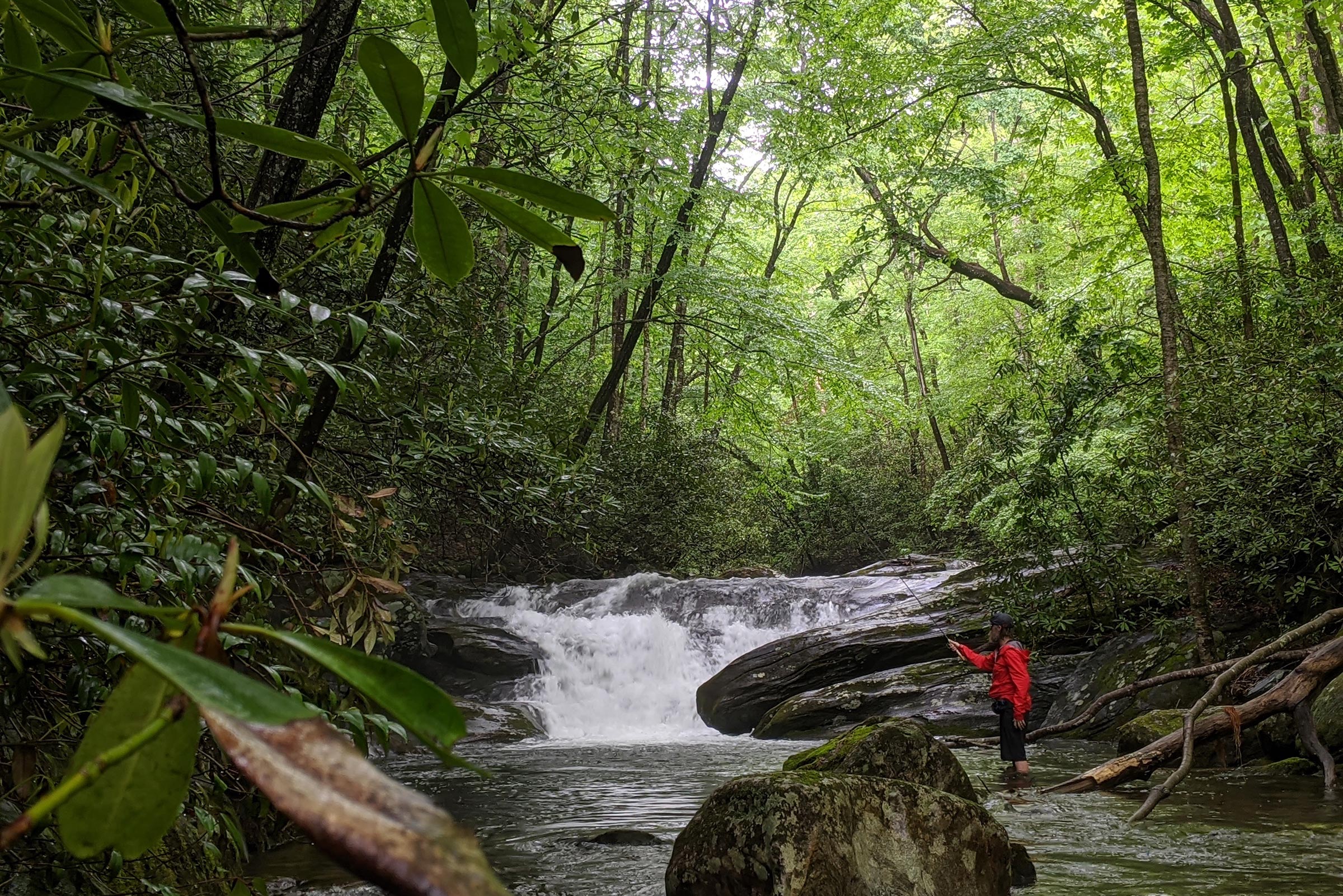
My Go-to Bikefishing Kit
Here’s my standard bikefishing kit. I didn’t include too many details on flys or specifics for various fly fishing implements, so feel free to leave a comment if you have any questions.
Fly Rod and Gear
– Tenkara USA Sato rod/case
– Tenkara line keeper and line
– Small fly case and flies
– Loon Aquel floatant
– 6x Trout Hunter tippet
– Pair of cheap forceps
Apparel/gear
– Bedrock Cairn 3d Sandals
– Wool socks
– 7mesh rain jacket
– Tarp
– Helinox Chair Zero
– Reading glasses
Carry-ology
Now that we have all this extra fishing gear, how are we going to strap it onto the bike alongside the bikepacking kit? Honestly, it’s not a ton of extra gear. The biggest items are the rod and sandals. Here are a few ways I’ve carried it…
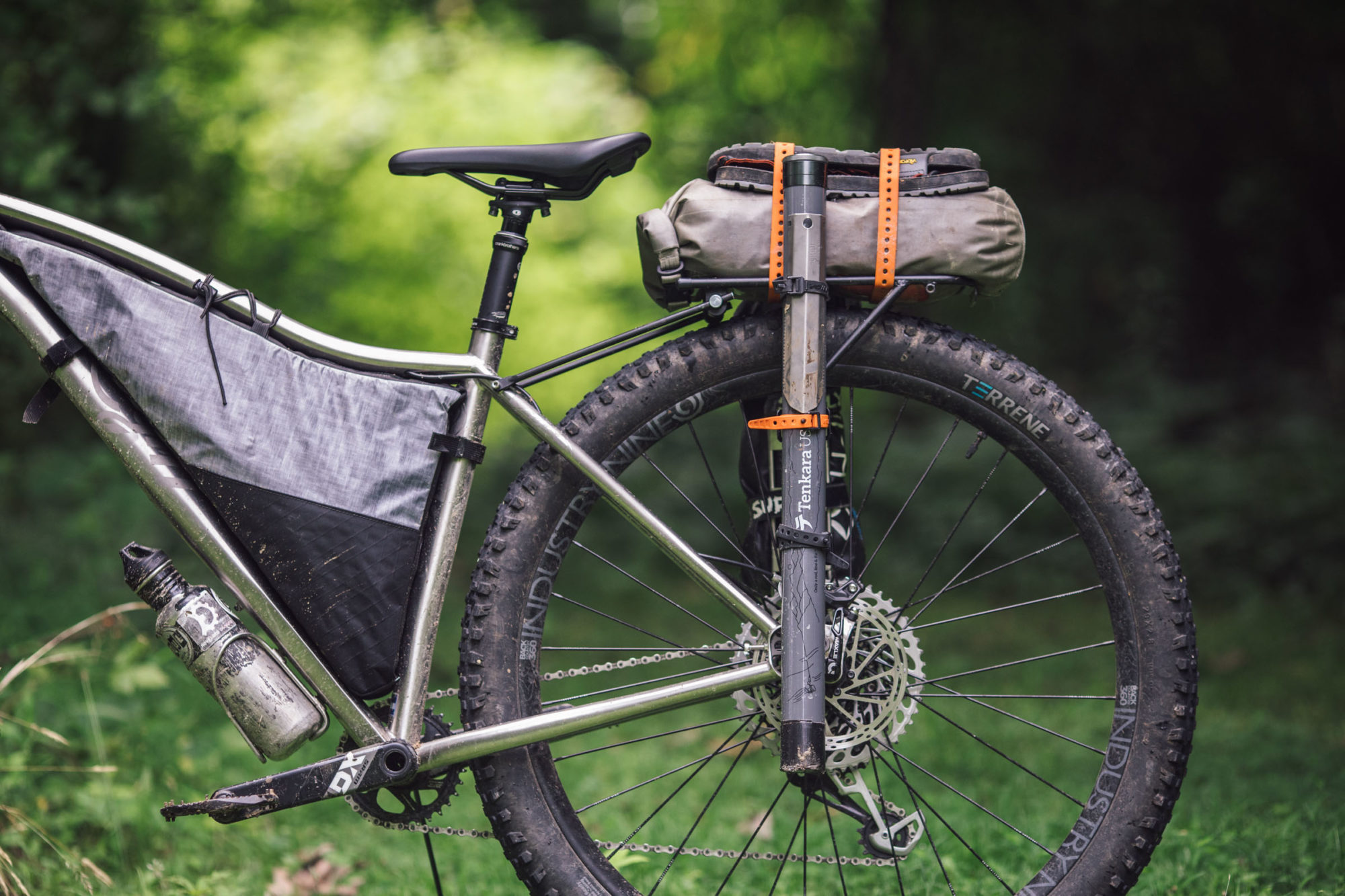
Rack
My favorite method for carrying a bikefishing kit is with the Tumbleweed T Rack. The three-pack eyelets allow you to use Problem Solvers Bowtie Strap Anchors or the Drj0n Bagworks Strap Deck System to hold a rod storage tube. Both work equally well when used with short Voilé straps or 9″ Voilé Nano Straps. In addition, it’s pretty simple to strap a pair of Bedrock Sandals on the rack platform over or under a drybag with other bikepacking gear.
Note that the Sato storage tube is medium heavy at 120 grams. You can easily make your own out of lightweight closed cell foam, which would save a little weight. If you decide to carry the rod within the tube in a vertical position on the rack, be sure to put some duct tape around the bottom end as the end cap can come loose on bumpy rides.
Handlebar Harness
Handlebar harnesses like Revelate’s Harness or Pronghorn work perfectly well, too. I’ve strapped the Tenkara Sato in the harness in the storage tube and without; strapping it against a long drybag keeps it protected, which allows you to ditch the heavy storage tube.
Hip Pack
Some hip packs, such as Swift’s Ardea or Porcelain Rocket’s Dumpling, also have provisions for bottom loading accessory straps, allowing you to lash a Tenkara directly to the pack. This keeps your fishing kit all in one place and provides a simple way of carrying a rod.

Frame Bag, Top Tube, or Fork Leg
I’ve also simply loaded my Tenkara directly into my frame bag. It takes a rather large frame bag to do so, but it is possible. In addition, you can easily strap a Tenkara to your top tube, down tube, or even one of the legs of your fork.
For those interested in learning more about bikefishing, be sure and check out Hanzi Johnson’s guide here. And, you can find several videos, routes, and other stories at our tag #bikefishing here.
Please keep the conversation civil, constructive, and inclusive, or your comment will be removed.






